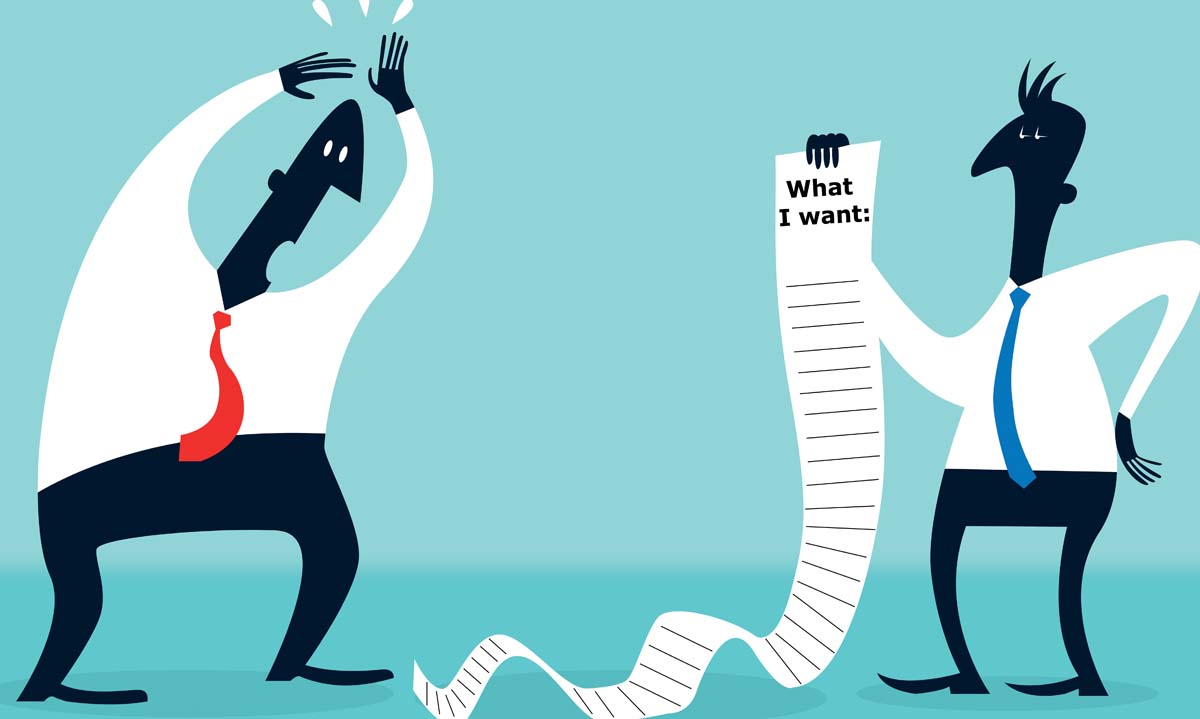Answers to questions MyHR receives from its members about the disciplinary process.
Questions covered:
- What are the steps in the disciplinary process?
- How long should the disciplinary process take?
- Can you repeat a disciplinary process?
- Can employers cut hours as part of the disciplinary process?
- How much notice does an employer have to give for a disciplinary?
- What process do I have to go through to issue a warning?
- How many warnings before dismissal?
- How long do written warnings last?
- Can I give someone a verbal warning?
- Can I give someone a final written warning for a different issue the formal warning was issued for?
- Can I give someone a warning for taking too much sick leave?
- My employee's been late every day this week. Can I fire them?
- What is the difference between a representative and a support person?
- Can I issue a warning in the response meeting?
- I want to fire someone who has been with me for a week. Can I use the trial period?
- What are my obligations in a probationary period?
- How does a trial period termination differ from a probationary period termination?

What are the steps in the disciplinary process?
Before starting, you need solid grounds for taking disciplinary action, so investigate the matter fully, talk to any witnesses (if appropriate), and check the details of the employment agreement and relevant company policies.
From there, the process centres around 3 key meetings with the employee:
- Notification meeting – you formally present your concerns to the employee, in writing. The employee isn’t required to respond immediately.
- Employee response meeting – the person gets a chance to tell their side of the story.
- Outcome meeting – presenting your decision.
You should give the employee time to seek advice and prepare their response - at least 2 business days between the meetings. They don’t have to respond, but you must give them the opportunity.
You must also take time to consider their response before you make a final decision - this is a legal requirement, and can’t be skipped. An open mind is key!. The outcome may mean you proceed with a formal warning or the employee may have proved it was not their fault or there were extenuating factors.
Remember, the process must be fair and reasonable at all times. If not, any warning or dismissal may be deemed unfair, and therefore invalid.
Learn more about the disciplinary process.
How long should the disciplinary process take?
There are no stipulated time limits, and the length of the process will depend on the issue you’re presented with, its severity, how many people are involved etc.
However, you should always be mindful of completing the process fairly and thoroughly, while seeking to resolve it as promptly as possible (to minimise the stress on all involved).
One to 2 weeks is typical; anything longer than 3 weeks is very unusual.
Can you repeat a disciplinary process?
Yes. Holding an employee closely to account with repeated disciplinary procedures falls under the umbrella of performance management.
If you’re dealing with an employee who is unwilling (or unable) to improve their performance or conduct, it’s best to run 3 disciplinary processes to safely remove them from the business. The first process would end with a formal written warning, the second with a final written warning, and the third with dismissal on notice.
You may be tempted to shortcut this process, but unless the misconduct is serious, case law has established that you need to give the person formal warning that they need to improve and you have to give them the opportunity and support to do so.
Can employers cut hours as part of the disciplinary process?
This would be unusual, and it could only happen if it was a fair and reasonable response to the issue that the employer is managing. It couldn’t be done as punishment for poor performance or because the employer is fed up with the employee.
Seek specialist advice if you’re considering doing this - it would need to be proposed to the employee in the first meeting, so that they could go away and think about the proposal, as well as the other parts of the disciplinary action.
How much notice does an employer have to give for a disciplinary?
Employers are not required to give the employee any notice for the first meeting. This means once you have completed any necessary investigation and gotten your documents in order, you could simply ask the employee to meet with you privately, and begin the disciplinary process that day.
Alternatively, if you’d prefer to book a meeting with the employee 1 or 2 days ahead of time, you can do this, too. Both are legal, and which is more appropriate will depend on your business culture and practices, and on the employment relationship.
What process do I have to go through to issue a warning?
Any punitive outcome, whether it’s a formal warning, final warning, or dismissal, must occur after you’ve undertaken a process of consultation with the employee.
There are no short-cuts here; the days of simply issuing someone with a warning without going through the full process are long gone.
How many warnings before dismissal?
As we said above, for continued poor performance or misconduct, you would give the person a formal written warning at the end of one disciplinary process, a final written warning at the end of a second, and then give them notice at the end of a third disciplinary process.
If the misconduct was serious, however - e.g. theft, violence, being intoxicated at work - you could summarily dismiss the person. Be aware that this is not instant.
You can suspend the employee immediately, having proposed suspension to them first, but you still have to follow legal termination procedures, which include investigating the matter and allowing time for reflection and feedback (as per the disciplinary process).
How long do written warnings last?
The general rule that warnings last for 12 months, but it is good practice to state how long they are for when you issue them. Depending on the circumstances, they can sometimes be relied on for longer than is stated in the warning itself.
Can I give someone a verbal warning?
Case law has established that in order for a warning to be valid, there first has to be consultation with the employee. Verbal warnings are often issued on the spot or after an informal discussion, which means fair and reasonable process hasn’t been followed.
You can decide to issue a verbal warning once you’ve been through the consultation process. But written warnings make the matter clearer and provide a demonstrable paper trail that puts you on much firmer ground.
Learn about managing employee issues before you need disciplinary.
My employee is on a formal warning for poor accuracy and making mistakes in the reports that they provide to our management team. Can I give them a final written warning for a different issue, or does it have to be related to the same issues that the formal warning was given for?
Prior warnings for unrelated issues can count towards a final warning. If you issued a formal warning for the first issue, you can take the person through another disciplinary process for the separate matter and issue a final warning.
Having an employee on various warnings for multiple issues isn’t reasonable. However, the Ministry of Business, Innovation and Enterprise recommends giving the employee the opportunity to comment on why a previous warning should not count against them.
Can I give someone a warning for taking too much sick leave?
If you think an employee has misused their sick leave entitlements, you should treat it as an employment relationship problem and use the normal disciplinary process for investigating and resolving the issue.
Don’t rush straight to issuing a warning without undertaking fair and proper process.
Learn more about the importance of proper leave management.
My employee's been late every day this week and I'm fed up. Can I fire them?
You could, but it’s illegal and would put you at serious risk of a personal grievance claim (and any potential penalties or payouts).
If you have tried proactive measures to change the person’s behaviour, formal disciplinary procedure is the next step to find a constructive way forward.
But if you feel the employment relationship is not salvageable, it may be better to negotiate a settlement with the employee to usher them out of the business.
Get more tips for dealing with problem employees.
What is the difference between a representative and a support person?
A representative is someone the employee selects to represent them and be their voice during a process. They are usually someone who attends in a professional capacity, e.g. a lawyer or union rep, being paid to speak on behalf of the employee.
A support person is someone the employee brings with them for moral support, e.g. a friend or family member. The support person is not expected to speak on the employee’s behalf or represent them in communication.
Can I issue a warning in the response meeting?
We don’t recommend making a decision then and there. The next step in the disciplinary process is to go away and fairly consider all the evidence and come to a reasoned decision.
If not, the employee could later claim you failed your statutory requirement to properly consider their explanation, and therefore, any warning you issued would be invalid.
Find out more about running an effective employee response meeting.
I want to fire someone who has been with me for a week. Can I use the trial period?
Not unless you and the employee have agreed to a trial period before they start work and it is stated in their employment agreement.
There are several hoops to jump through when using a trial period. If you’re considering doing so, seek specialist advice to ensure you have a valid trial period in place.
What are my obligations in a probationary period?
As with most employment situations, good faith and fair process are key. Employers need to:
- Assess the employee’s work fairly and give timely feedback on any issues.
- Support the person and provide any necessary training.
- Give the employee the chance to improve.
- Follow through on any commitments made to the employee.
You must also tell the person if there’s a chance their employment might not continue after the probationary period. This is critical. If an employee is unaware that their employment is at risk, you may not be able to end their employment using the probation period.
If you still wish to exit the employee at the end of the period, you must explain why, give the person a chance to respond, and consider that response in making your final decision.
Learn more about effectively using probationary periods.
How does a trial period termination differ from a probationary period termination?
Trial periods
During a trial period, the employer must fairly assess the employee and give them clear feedback and the opportunity to improve if there are areas of concern. The employer must be explicit and advise the employee if any concerns are likely to trigger a trial period termination.
The employer can subsequently dismiss the employee without stating their reasons. However, if the employee asks, they must provide their reasons in writing. The employer must give notice of the termination and the length and terms of the notice must be those stated in the employment agreement.
The employee can’t raise a personal grievance claim about their dismissal.
Probationary periods
During a probationary (or probation) period, the employer must fairly assess the employee and give them clear feedback and the opportunity to improve if there are areas of concern. The employer must be explicit and advise the employee if any concerns are likely to trigger a probation period termination.
If the employer decides to terminate they must explain why and that they intend to end the person's employment. The employee has to be given an opportunity to respond, which the employer must consider before making a decision. The employer can then give the employee notice to end their employment.
Employees can raise a personal grievance on the grounds of unjustified dismissal.
-1.jpg)



